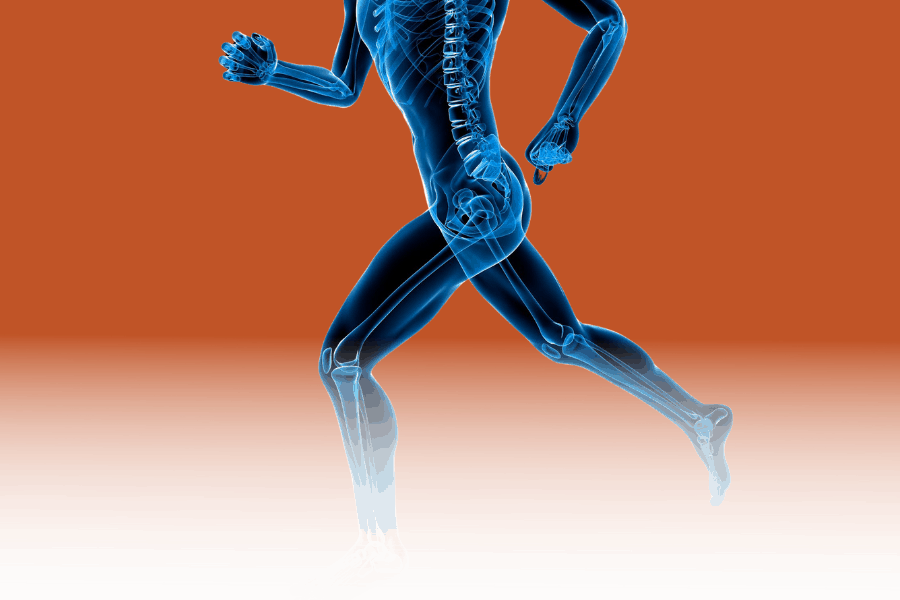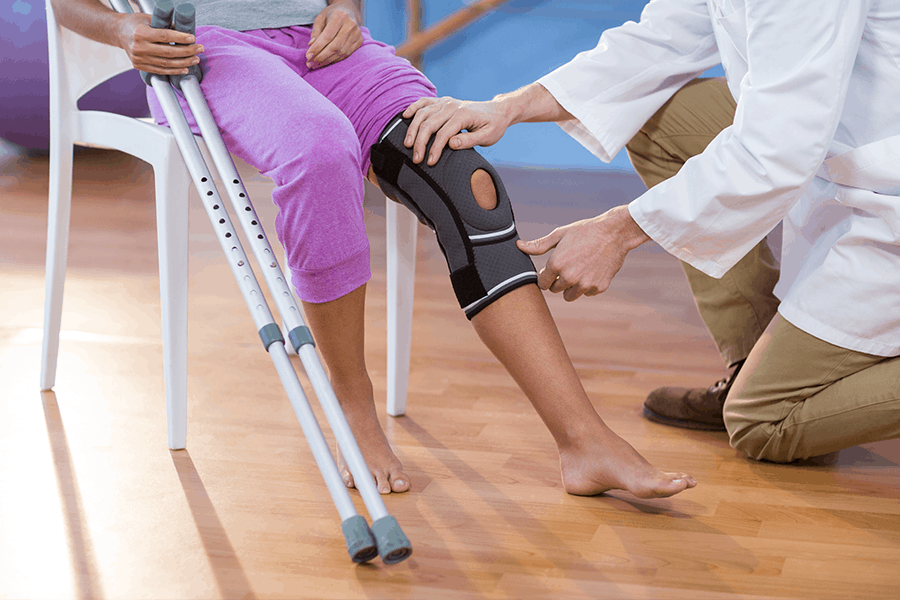- What is a partial knee replacement?
- At what point does my arthritis make me a candidate for partial knee replacement?
- What are the benefits of partial knee replacement surgery for arthritis?
- What’s recovery like after partial knee replacement surgery?
Arthritis is the most common culprit of joint pain, affecting both mobility and quality of life for one in three working-aged Americans. If you are one of these people that suffer from arthritis, surgery may become necessary to help alleviate your symptoms and help you get your health and mobility back.
When it comes to arthritis in the knees, partial knee replacement surgery is a less invasive alternative to total knee replacement, and it can greatly help you if you have a disease like osteoarthritis in a specific area of the joint.
Total joint replacement surgeries are some of the most commonly performed elective surgeries in the United States. Often used to treat late-stage arthritis, these procedures remove and replace damaged joints to relieve pain and improve mobility.
One of the most frequently performed joint replacement surgeries is a total hip replacement. Approximately 400,000 of these procedures are performed each year in the United States, with projections showing an expected 179% increase by 2030.
These numbers make sense—as surgical methods improve and recovery times decrease, the procedure has become increasingly accessible and offers high success rates for patients who struggle with pain and mobility issues.
Jonathan G. Yerasimides, M.D., board-certified orthopedic surgeon at the Louisville Hip & Knee Institute says, “patients ask me how long it takes to recover from a hip replacement. Every patient is a little bit different but having done over 10,000 of these procedures at this point in my career, I’ve got a pretty good idea.”
In this article, Dr. Yerasimides explains the recovery process for hip replacement surgery and what patients can expect from their procedure.
What Is a Partial Knee Replacement?

Partial knee replacement is a surgical procedure that removes a specific part of the knee joint and replaces it with an implant to restore function to the area.
The knee is a complex, large joint that has three compartments that can be affected by arthritis:
- Inside or medial compartment of the knee
- Outside or lateral compartment of the knee
- Kneecap or patellofemoral compartment of the knee
“If only one out of the three is affected, you’re a candidate for a partial knee replacement,” says Joseph W. Greene, M.D. “If two or more are affected, then you need a total knee replacement.”
There are two types of partial knee replacement that focuses on these compartments:
- Unicompartmental partial knee replacement replaces either the medial or lateral compartment of the knee
- Patellofemoral partial knee replacement replaces the kneecap, called the patella, and where it meets the femur, called the trochlea.
During a partial knee replacement procedure, the surgeon makes a small incision in the knee to reach the damaged compartment. The surgeon then removes the damaged bone and cartilage from the joint and prepares the remaining surfaces for the prosthesis. These components are made of high-grade materials that are individually sized to fit your leg. Cement secures these components to the remaining joint. Then the surgical incision is closed with sutures that are beneath the skin to provide a cosmetic incision.
At What Point Does My Arthritis Make Me a Candidate for Partial Knee Replacement?
Chronic knee pain, which is primarily caused by chronic osteoarthritis, is a highly common experience in the United States. When a specific compartment of the knee is affected but the rest of the knee joint is healthy (also called unicompartmental knee arthritis), a partial knee replacement can help. For patients where the entire knee is affected by joint disease, a full knee replacement may be the best option.
If you have debilitating and severe knee pain that hampers your ability to function, this surgery is an option. However, not everyone is a candidate for partial knee replacement. Typically, a variety of non-surgical options have been tried before we discuss surgical options. This could include:
- Exercise and weight loss to reduce knee stress
- Knee injections of corticosteroids, hyaluronic acid (gel shots), or other medications
- Over-the-counter or prescribed pain relievers
- Physical therapy to strengthen supporting muscles around the joint
- Walking aids such as a cane or knee brace
- Acupuncture or alternative medicines
If your knee pain persists despite these measures, it may be time to consider a surgical option. If your arthritis is confined to a specific knee compartment, the partial knee replacement could be the right approach. You must be generally healthy to undergo the procedure. The remaining ligaments in your knee should be intact and you should have a relatively good range of knee motion.
Interestingly, in the past, partial knee replacement was generally performed only on older patients after age 70. Today, the surgery can be effective on much younger, active patients.
What Are the Benefits of Partial Knee Replacement Surgery for Arthritis?

If you’re suffering from pain and restricted mobility due to unicompartmental knee arthritis, partial knee replacement can help relieve the pain and restore mobility while still preserving the parts of the joint unaffected by arthritis.
Partial knee replacement, which is also called knee arthroplasty, is surgically less invasive, because the orthopedist will move the supporting structures out of the way to reach the damaged area. The goal is to successfully repair only the affected compartment of the knee while minimizing collateral damage to surrounding bone and tissue.
When compared to a total knee replacement surgery, there are a few specific benefits of a minimally-invasive partial knee replacement:
- It preserves both the Anterior Cruciate and Posterior Cruciate Ligaments.
- These ligaments contain nerves which provide proprioceptive feedback – meaning it helps your body know where the knee is located throughout a range of motion and on uneven surfaces.
- It preserves more of your healthy bone and tissue
- It results in less blood loss
- There is less trauma to the surrounding tissue
- You will experience reduced pain and faster rehabilitation after the surgery
- You will recover with better range of motion in the knee joint
What’s Recovery Like After Partial Knee Replacement Surgery?

The good news is that a partial knee replacement stabilizes the knee as soon as the prosthesis is implanted. This means you can put weight on the knee as soon as you wake up from the surgery. The day of your surgery you will be taught safe, effective joint exercises that you can do at home to help speed recovery and regain your mobility. You’ll also be taught to use a walker and quickly transition to a cane.
Patients undergoing outpatient partial knee replacement at an outpatient facility such as Landmark Surgical Suites, return home the same day. Many of our patients express surprise at how good they feel after their surgery and are happy to recover in their own homes.
During your visit to Landmark Surgical Suites, you will work closely with our nurses to practice tasks that you’ll use at home, such as making it to the restroom safely while navigating with your crutches. When you arrive home, you’ll follow a treatment regimen of ice, elevation, and a gradual series of exercises to regain your mobility and strength. You will also have pain medication that can help manage any symptoms.
For the first one to two weeks after the surgery, you will focus on exercises to improve your range of motion while managing pain and swelling. During this time, we will check on you to ensure your incision is healing well and that you’re following your surgeon’s orders to speed your recovery.
Typically, within weeks after surgery, you will likely be able to discard the crutches or other walking aids as you work closely with your clinical team and physical therapist. Low-impact exercise may be added during this time. This could include stationary bicycling or increasing the length of your walks.
Talk with us about whether you are a good candidate for the procedure. If you’re experiencing one or more of these symptoms, please don’t hesitate to call on us:
- Knee grinding
- Pain and stiffness
- Inability to sleep at night due to knee pain
- Trouble with daily activities
Louisville Hip & Knee Institute specializes in repairing and treating joint diseases. We can help assess your knee pain to determine if partial knee replacement surgery is right for you. Contact us today.

